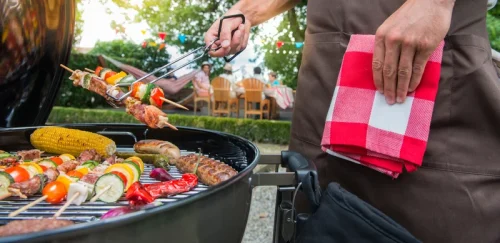Relapse, Relapse Prevention SpringerLink

One critical goal will be to integrate empirically supported substance use interventions in the context of continuing care models of treatment delivery, which in many cases requires adapting existing treatments to facilitate sustained delivery [140]. Given its focus on long-term maintenance of treatment gains, RP is a behavioral intervention that is particularly well suited for implementation in continuing care contexts. However, it is imperative that insurance providers and funding entities support these efforts by providing financial support for aftercare services. It is also important that policy makers and funding entities support initiatives to evaluate RP and other established interventions in the context of continuing care models.
Cognitive Factors in Addictive Processes

Support for her work has been provided by the National Institute on Alcohol Abuse and Alcoholism and the University of Washington’s Alcohol and Drug Abuse Institute. Additionally, individuals may engage in cognitive distortions or negative self-talk, such as believing that the relapse is evidence of personal weakness. Nonabstinence approaches to SUD treatment have a complex and contentious history, and https://ecosoberhouse.com/ significant social and political barriers have impeded research and implementation of alternatives to abstinence-focused treatment. We summarize historical factors relevant to non-abstinence treatment development to illuminate reasons these approaches are understudied. Ark Behavioral Health offers 100% confidential substance abuse assessment and treatment placement tailored to your individual needs.
Understand The Relapse Process
- For example, Bandura, who developed Social Cognitive Theory, posited that perceived choice is key to goal adherence, and that individuals may feel less motivation when goals are imposed by others (Bandura, 1986).
- This concurs not only with clinical observations, but also with contemporary learning models stipulating that recently modified behavior is inherently unstable and easily swayed by context [32].
- Individuals with greater SUD severity tend to be most receptive to therapist input about goal selection (Sobell, Sobell, Bogardis, Leo, & Skinner, 1992).
- When abstinence is violated, individuals typically also have an emotional response consisting of guilt, shame, hopelessness, loss of control, and/or a sense of failure; they may use drugs or alcohol in an attempt to cope with the negative feelings that resulted from their abstinence violation.
- Harm reduction may also be well-suited for people with high-risk drug use and severe, treatment-resistant SUDs (Finney & Moos, 2006; Ivsins, Pauly, Brown, & Evans, 2019).
If the reason for the violation is attributed to internal, stable, and/or global factors, such as lack of willpower or possession of an underlying disease, then the individual is more likely to have a full-blown relapse after the initial violation occurs. On the other hand, if the reason for the violation is attributed to external, unstable, and/or local factors, such as an extremely tempting situation, then the individual is more likely to recover from the violation and get back onto the path of abstinence. the abstinence violation effect refers to Related work has also stressed the importance of baseline levels of neurocognitive functioning (for example as measured by tasks assessing response inhibition and working memory; [56]) as predicting the likelihood of drug use in response to environmental cues. The study of implicit cognition and neurocognition in models of relapse would likely require integration of distal neurocognitive factors (e.g., baseline performance in cognitive tasks) in the context of treatment outcomes studies or EMA paradigms.
Normalize Relapse
In this context, a critical question will concern the predictive and clinical utility of brain-based measures with respect to predicting treatment outcome. Additionally, the revised model has generated enthusiasm among researchers and clinicians who have observed these processes in their data and their clients [122,123]. Still, some have criticized the model for not emphasizing interpersonal factors as proximal or phasic influences [122,123]. Other critiques include that nonlinear dynamic systems approaches are not readily applicable to clinical interventions [124], and that the theory and statistical methods underlying these approaches are esoteric for many researchers and clinicians [14].
- Based on activation patterns in several cortical regions they were able to correctly identify 17 of 18 participants who relapsed and 20 of 22 who did not.
- Early attempts to establish pilot SSPs were met with public outcry and were blocked by politicians (Anderson, 1991).
- Recognizing the factors that contributed to the lapse, such as stressors or triggers, helps individuals to develop strategies and techniques to navigate similar challenges in the future.
Working with Dr Lindgren, she has investigated implicit alcohol cognitions, along with the impact of the environment on self-reported measures of alcohol consumption. Kristen P. Lindgren is an assistant professor and licensed clinical psychologist in the University of Washington’s Department of Psychiatry and Behavioral Sciences. Her work focuses on implicit (i.e. nonconscious or automatic) cognitive processes that contribute to the development and maintenance of maladaptive behavior and psychopathology.
Finally, an intriguing direction is to evaluate whether providing clients with personalized genetic information can facilitate reductions in substance use or improve treatment adherence [110,111]. Individuals with fewer years of addiction and lower severity SUDs generally have the highest likelihood of achieving moderate, low-consequence substance use after treatment (Öjehagen & Berglund, 1989; Witkiewitz, 2008). Notably, these individuals are also most likely to endorse nonabstinence goals (Berglund et al., 2019; Dunn & Strain, 2013; Lozano et al., 2006; Lozano et al., 2015; Mowbray et al., 2013). In contrast, individuals with greater SUD severity, who are more likely to have abstinence goals, generally have the best outcomes when working toward abstinence (Witkiewitz, 2008).

- This model both accelerated the spread of AA and NA and helped establish the abstinence-focused 12-Step program at the core of mainstream addiction treatment.
- He has received continuous funding for his research from a variety of agencies including the National Institute on Alcohol Abuse and Alcoholism, the National Institute on Drug Abuse, the Alcoholic Beverage Medical Research Foundation, and the Robert Wood Johnson Foundation.
- Unfortunately, there has been little empirical research evaluating this approach among individuals with DUD; evidence of effectiveness comes primarily from observational research.
- It is, however, most commonly used to refer to a resumption of substance-use behavior after a period of abstinence from substances (Miller, 1996).
- It is essential to understand what individuals with SUD are rejecting when they say they do not need treatment.
- However, these groups’ momentary ratings diverged significantly at high levels of urges and negative affect, such that those with low baseline SE had large drops in momentary SE in the face of increasingly challenging situations.
Findings indicated nonlinear relationships between SE and urges, such that momentary SE decreased linearly as urges increased but dropped abruptly as urges peaked. When urge and negative affect were low, individuals with low, intermediate or high baseline SE were similar in their momentary SE ratings. However, these groups’ momentary ratings diverged significantly at high levels of urges and negative affect, such that those with low baseline SE had large drops in momentary SE in the face of increasingly challenging situations. These findings support that higher distal risk can result in bifurcations (divergent patterns) of behavior as the level of proximal risk factors increase, consistent with predictions from nonlinear dynamic systems theory [31]. The client’s appraisal of lapses also serves as a pivotal intervention point in that these reactions can determine whether a lapse escalates or desists.
- Many therapies (both behavioral and pharmacological) have been developed to help individuals cease or reduce addictive behaviors and it is critical to refine strategies for helping individuals maintain treatment goals.
- Clinicians in relapse prevention programs and the field of clinical psychology as a whole point out that relapse occurs only after a long-term pattern of specific feelings, thoughts, and behavior.
- It is important to note that these studies were not designed to evaluate specific components of the RP model, nor do these studies explicitly espouse the RP model.
- The current review highlights multiple important directions for future research related to nonabstinence SUD treatment.
- Relapse Prevention (RP) is another well-studied model used in both AUD and DUD treatment (Marlatt & Gordon, 1985).

